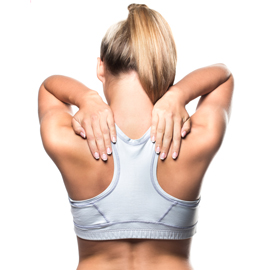How to approach an exercise routine for osteoporosis and anti-aging in Rochester Hills
As the old saying goes, time makes fools of us all. Though we may stay spry and strong through young adulthood, passing years and changing hormones can cause all sorts of physical and mental problems, including muscle and bone loss.
Osteoporosis, which reduces bone mass and makes bones weaker, can occur at any age, but the risk increases as you get older. If you have osteoporosis, you may have sought anti-aging treatment to find relief from your symptoms. Though this can be helpful in overcoming the difficulties of osteoporosis and age, every individual with osteoporosis needs to be cautious to avoid the pain and damage that the condition can cause—especially during exercise.
Exercising with Osteoporosis
It may seem scary to exercise with osteoporosis given the increased risk of bone fracture and injury. However, regular exercise is recommended to just about everyone who suffers from osteoporosis. This is because regular exercise can increase and maintain your body’s bone mass, but you’ll still need to be careful of the kind of workout you choose to do.
If you’re ready to start fighting osteoporosis with an exercise program, the initial step is to speak with your doctor. The team at Waller Wellness can help you determine whether or not exercise will be a healthy and appropriate way for you to combat bone loss. But everyone with osteoporosis is generally advised to avoid exercise that involves the following:
- High-impact activities. Activities that involve running and jumping are high-impact, which means they put extra stress on your joints and bones. Any high-impact activity will put you at increased risk of damaging your spine and bones, making them essential to avoid if you have osteoporosis.
- Bending from the waist. Anything that causes your body to curve at the waist can increase the risk of fracture in those who have osteoporosis. This makes it necessary to avoid exercises like sit-ups and toe touches, but activities like golf, bowling and yoga may be problematic as well.
Now that you know how you shouldn’t exercise with osteoporosis, it’s time to learn a little bit about how you should. Recommended exercise for osteoporosis generally falls into three camps:
- Strength training. Activities like weight lifting can be a boon for your muscle and bone strength. Many studies have demonstrated the ability of resistance exercises to build denser bones and decrease your chances of fracture. Building strength in all your body’s muscles will help the most, but be careful not to overwork each area too much. Barbells and resistance bands will help you get more resistance exercise, as will aquatic activities like swimming.
- Weight-bearing workouts. Any activity that uses your legs and feet to support your weight can improve your bone health. A weight-bearing workout can be something as simple as walking or as complex as ballroom dance. Note that this does not include activities like cycling or swimming—in these exercises; something else is supporting your weight (a bike or the water around you).
- Flexibility training. Improving the flexibility of your joints can help you prevent injury, with or without osteoporosis. Stretching can help you stay flexible, but so can activities like tai chi and yoga. If you choose to practice yoga, just take care with the poses you do—some may contort your body into a position that increases your risk of injury.
Exercise is important when you have osteoporosis, but so is a cautious approach to being active. If you have any questions or concerns about developing a workout program with osteoporosis, don’t hesitate to get in touch with us for assistance.







